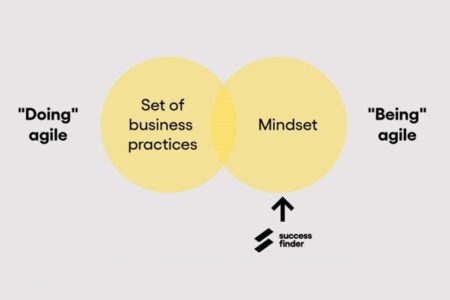Why diversity, equity, and inclusion matter
If you’ve ever had “a gut feeling” about someone, you’ve already had some experience with unconscious bias.
As explained in Bailey Reiners’ article “16 Unconscious Bias Examples and How to Avoid Them”, “unconscious biases […] are the underlying attitudes and stereotypes that people unconsciously attribute to another person or group of people that affect how they understand and engage with a person or group.”
Biases can have an impact at multiple stages of the recruitment process and even further on in an employee’s journey. For example, the way job descriptions are written, as well as certain aspects of a CV (gender, age, ethnicity, etc.), could promote unconscious bias.
“Check the diversity of your shortlist,” says my colleague Carolyn Hass, Vice-President, Product and R&D at SuccessFinder. “If the individuals are a little too similar in terms of background and demographic, you may have given into your biases.”
If you are a manager or work in HR, how do you conquer bias and promote diversity, equity, and inclusion at your company?
Knowing is half the battle
Real change involves re-evaluating your processes, tools, and metrics for any built-in prejudice. Equipped with the right data, you can better assess your company’s situation and implement new tools and processes that reduce or remove bias. Data also allows you to benchmark yourself against industry trends and see how you compare.
SuccessFinder offers an online behavioral test and a platform designed for HR teams who want to remove bias in their hiring and talent management decisions.
The platform’s Culture Impact solution uses customized cultural benchmarks, built from a mix of their actual culture and what they aspire to, to help you build trust with key stakeholders and promote diversity.
“There is a fear that testing will discourage diversity or produce clones. That is a legitimate concern if the assessment being used does not capture enough of the nuance in individuals’ profiles,” explains Hass. “Lower resolution assessments ‘categorize’ people into too few ‘boxes’. At SuccessFinder, we strongly believe that data is not as important as gathering high-quality, thorough, and accurate data.”
The earlier you bring in a tool like SuccessFinder into your hiring arsenal, the less likely you are to succumb to the negative effects of unconscious bias.
Your to-do list for tackling workplace bias
What are some things to keep in mind if inclusion and diversity are important to your HR and talent development strategy? The following are some tips I brought up at a virtual panel organized by the Women in Business and Human Resources clubs from Concordia’s John Molson School of Business, in Montreal, Canada:
- Remain conscious of the fact that people are predisposed to bias
- Adopt objective measures such as behavioral data
- Seek the opinion of individuals who have a different background from you
- Prepare to be challenged and embrace other perspectives
- And last but not least, actively take a stance on social issues like bias
The latter tip demonstrates your company’s values. The culture and values of a company are more important than ever when it comes to employee experience and public perception. It tells employees and other stakeholders that the company stands with them.
You can also read more about the what the panel talked about in this article.
What can the right data do?
We advise HR managers not to shorten their hiring list too quickly. Rather, they should include more data in their processes and validate hiring criteria by establishing strong links between said criteria and performance. What’s more, performing online assessments can widen your talent pool because it will prevent you from eliminating worthy candidates based on biases.
“You can now have strategic discussions about your workforce based on data, using KPIs to support your decisions just like you would in marketing, operations, or sales. Data analytics through assessments and technology can shed light on aspects of your business you would never have noticed otherwise – both the positive and the negative,” Hass explains. It will pinpoint “stats that an organization can celebrate and highlight ones which need to be addressed promptly.”
There’s another key advantage to taking bias more seriously in your hiring and talent development decisions: Diversity leaders benefit from more perspectives, are known to innovate more, and have a higher probability of outperforming their competitors in terms of profitability.

